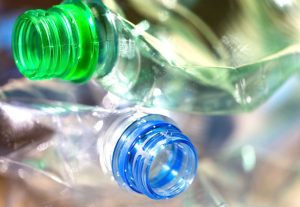Bio-based plastics: inspired by nature
We want to move away from the use of petroleum-based plastics. The downsides of petroleum are well known: its use results in considerable CO2 emissions and it will eventually run out, and therefore also become expensive. Plastics can also be produced using sustainable raw materials such as starch or lactic acid. The problem, however, is that petroplastics have some important properties that we do not want to have to give up. Very often, the bio-based plastics currently on offer lack these crucial properties. A plastic cola bottle, for example, will stay under pressure for at least two years – something that is not yet achievable using an alternative made from starch. Plus, no replacement has yet been found for super-strong materials such as nylon.
Terpenes: alternative to plastic bottles
 Happily, developments are not standing still. Plants provide us with an almost unlimited source of inspiration when it comes to the search for bio-based alternatives, for example to traditional plastics. We focus in our search on plant materials that have a very similar structure to the raw materials used in existing materials. As part of this search, we are carrying out research on terpenes, which are volatile compounds produced by plants. We have discovered, for example, that a certain sage variety produces a terpene with a very similar chemical structure to terephthalic acid, an essential raw material in plastic bottles. We are analysing how the plant produces this terpene and the genes, enzymes and biochemical pathways that play a role in its production. We will then look at how to accelerate this process using fast-growing plants or micro-organisms.
Happily, developments are not standing still. Plants provide us with an almost unlimited source of inspiration when it comes to the search for bio-based alternatives, for example to traditional plastics. We focus in our search on plant materials that have a very similar structure to the raw materials used in existing materials. As part of this search, we are carrying out research on terpenes, which are volatile compounds produced by plants. We have discovered, for example, that a certain sage variety produces a terpene with a very similar chemical structure to terephthalic acid, an essential raw material in plastic bottles. We are analysing how the plant produces this terpene and the genes, enzymes and biochemical pathways that play a role in its production. We will then look at how to accelerate this process using fast-growing plants or micro-organisms.
Bio-based plastics as an alternative to nylon
Nylon is another example of a plastic that does not have a straightforward bio-based alternative. Caprolactam is used to produce nylon; this is an organic compound that is unfortunately not found in nature. However, plant substances can be found that are very similar to caprolactam. We are confident that, through research, we will be able to find a nylon replacement.
Next step: efficient production process
In our search for plant-based alternatives to chemical petroleum-based compounds, we often work together with business partners, from start-ups to chemical multinationals. We have been able to show in various projects that, technically, much is possible. The next step is to achieve a more efficient production process. I expect some developments to take place quickly; for example, it must be possible to produce a competitive, bio-based alternative to the plastic bottle within five years from now. Other developments, however, will take more time, such as the production of an alternative to nylon. We are also working on using solar energy and solar cells to convert CO2 into a raw material for plastics through photosynthesis.
It is clear that the solutions for the transition from ‘fossil-based’ to ‘bio-based’ are to be found in nature. This will require a lot of puzzling out, but the major steps being taken in genetics research are helping us fit the various puzzle pieces together increasingly quickly.
Please share your comments below.

